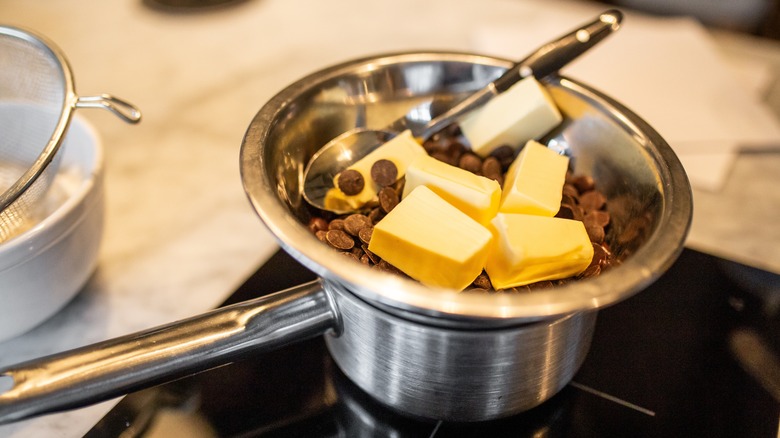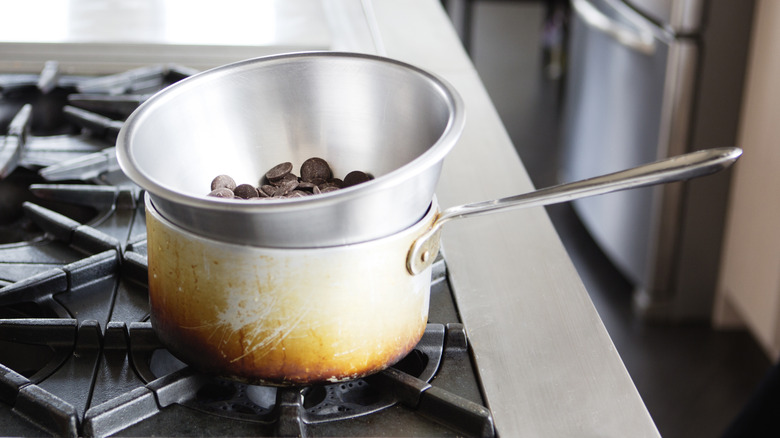How To Choose The Right Bowl For Your Double Boiler
A double boiler is one of those pieces of specialty kitchen equipment that does one job and does it very well. It's designed to heat and cook things as gently as possible by adding layers of insulation between whatever you're cooking and your heat source, giving you more control. This is especially important when you're working with temperamental ingredients like eggs in a custard or melting the coating for dark chocolate-covered salted caramels.
Most double boiler sets come with an outer pot and an inner pot. The inner pot is a little smaller and shorter than the outer one. After adding a few inches of water to the outer pot, the inner pot slips inside, suspended above the water. Heat must then travel through the water and the air space between the water and the inner pot, very gently warming its contents. This slows down the heating process which helps you avoid breaking your hollandaise sauce or causing chocolate to seize.
Unless you make candy or crème anglaise on a regular basis, it's unlikely that you have a double boiler on hand. Fortunately, it's very easy to DIY one with an ordinary saucepan and a mixing bowl. It's important to choose a bowl made from heat-safe materials that fits on top of your saucepan without touching the bottom. However, a bowl that's too big may be hard to manage as you whisk the hot ingredients inside. Picking the right bowl is as much about safety as it is successful cooking.
How to assemble a DIY double boiler
When considering a bowl for your double boiler setup, choose a bowl made from heat-safe glass, ceramic, or metal. Heat may not transfer efficiently if the walls of your bowl are too thick, so heavy stoneware isn't the best choice. Metal mixing bowls work very well, as they have thinner walls and are durable. However, PYREX (all uppercase, which means it's likely composed of heat-friendly borosilicate glass) is also a great choice. Stay away from any kind of plastic, even if it's the hard microwave-safe variety, as it could melt and ruin your saucepan (and your recipe).
It's also important to consider the size of your bowl. It should be large enough to completely cover the top of your pot, but not so large that it feels unbalanced or slides around easily. You want it to sit low and feel stable without risking it touching the hot water, which will result in direct heat transfer. You may also want to grab a heat-proof glove or silicone tongs to help hold the bowl steady while you whisk.
Assemble your double boiler by adding a little water to the saucepan and setting the bowl on top. Make sure the bowl isn't touching the water, as excess heat could scorch your delicate ingredients. At this point, your DIY double boiler is ready to help make an olive oil-based dairy-free lemon curd, melt white chocolate for a mirror glaze, or create a garlicky béchamel as a base to your favorite silky fondue.

